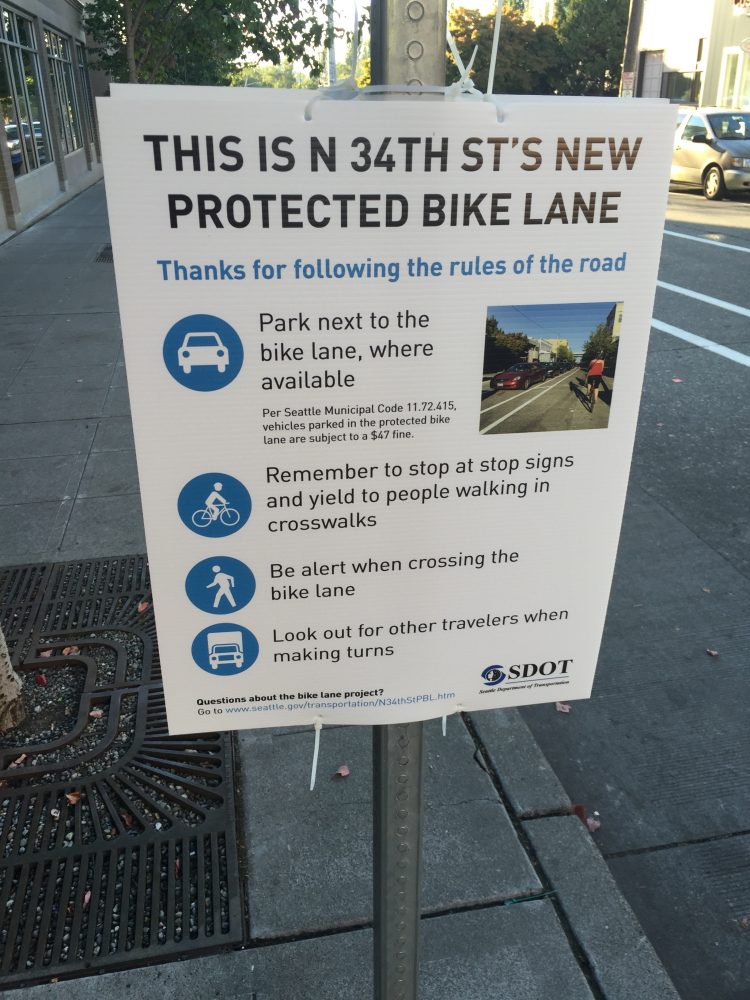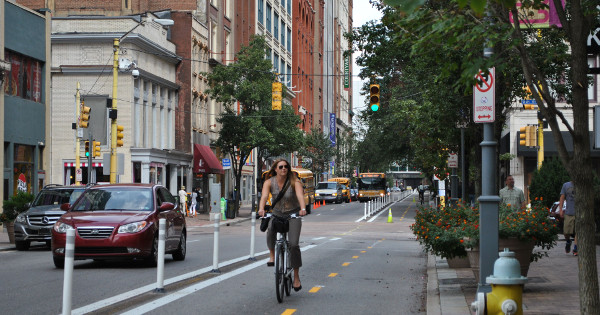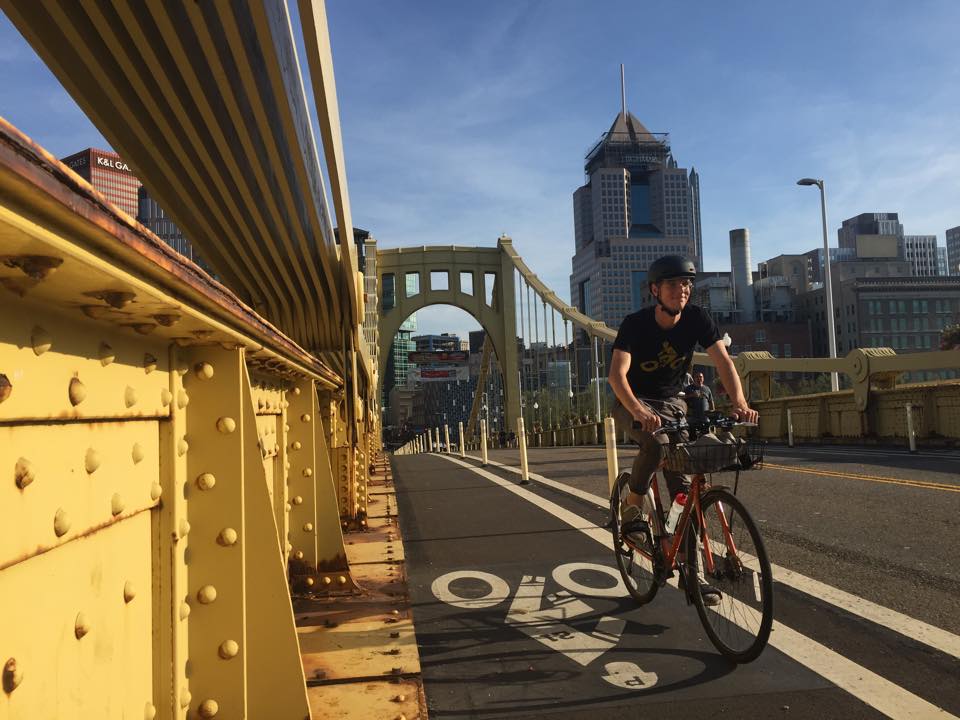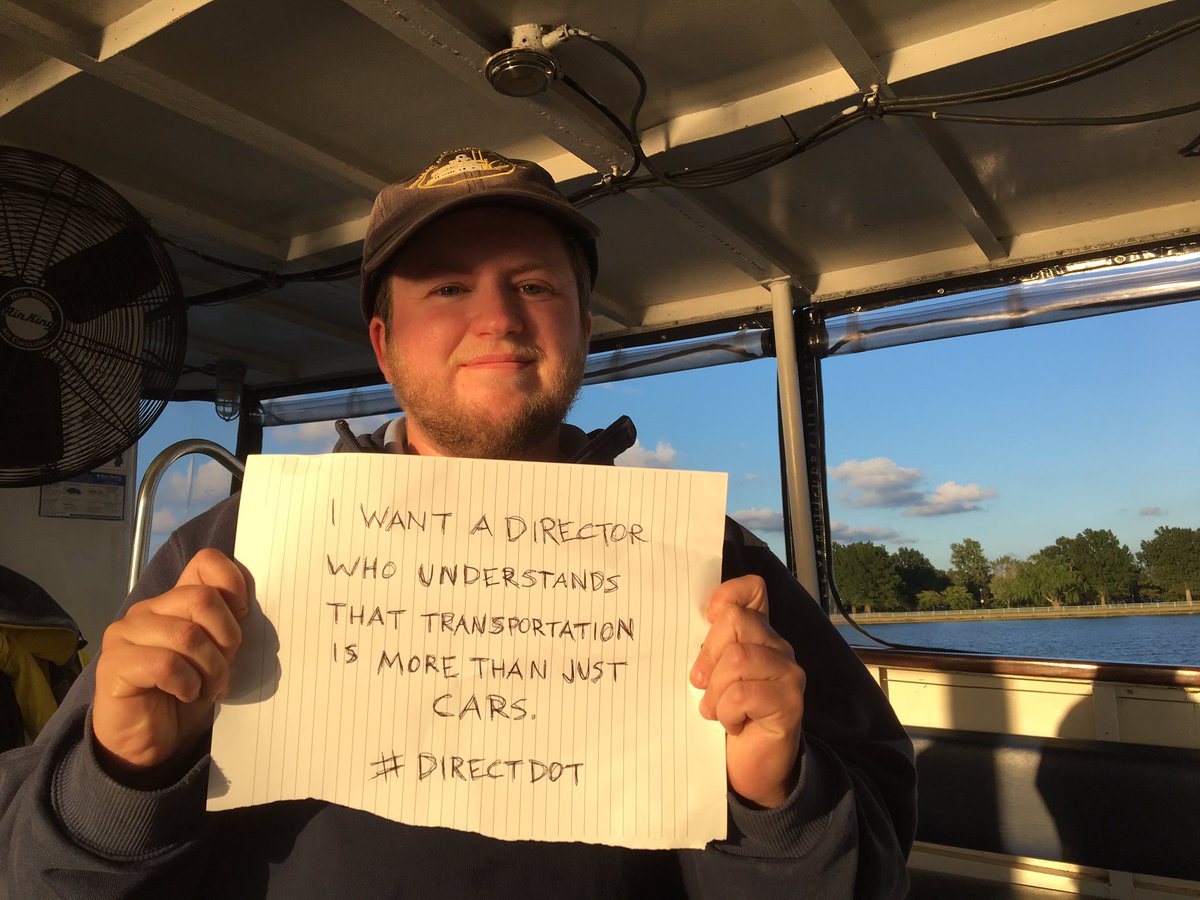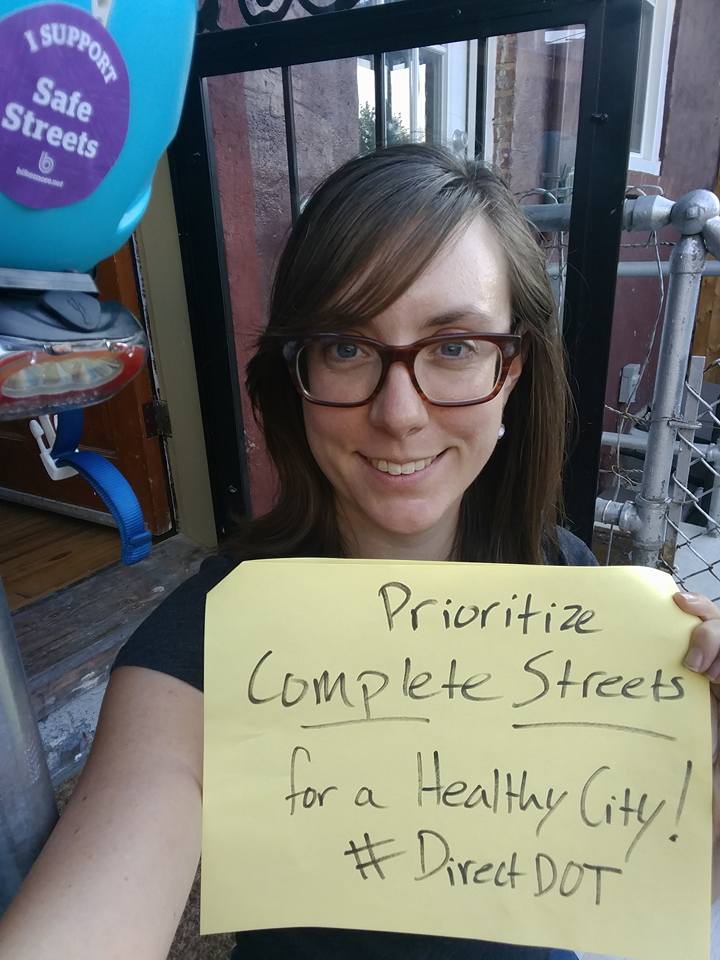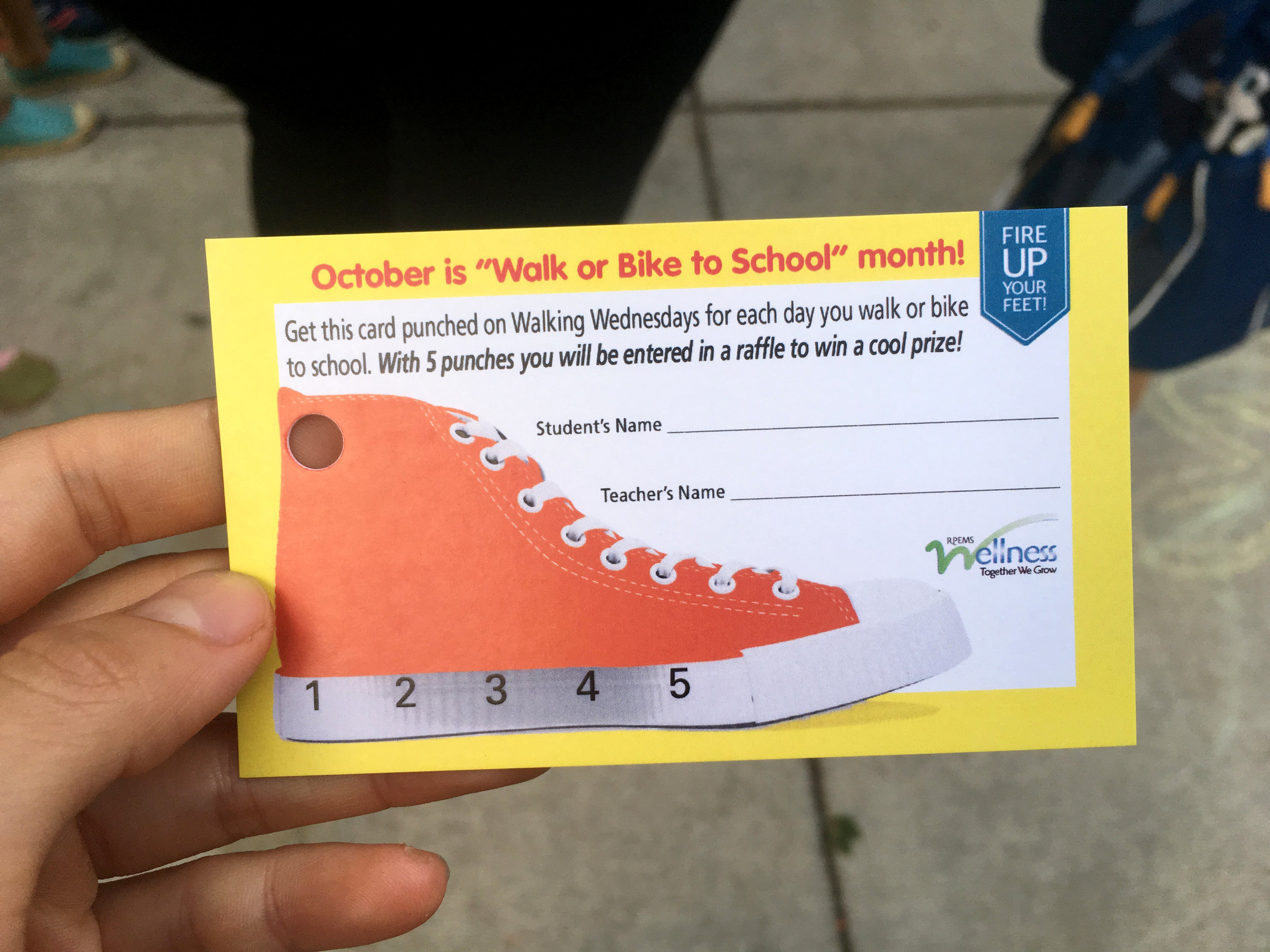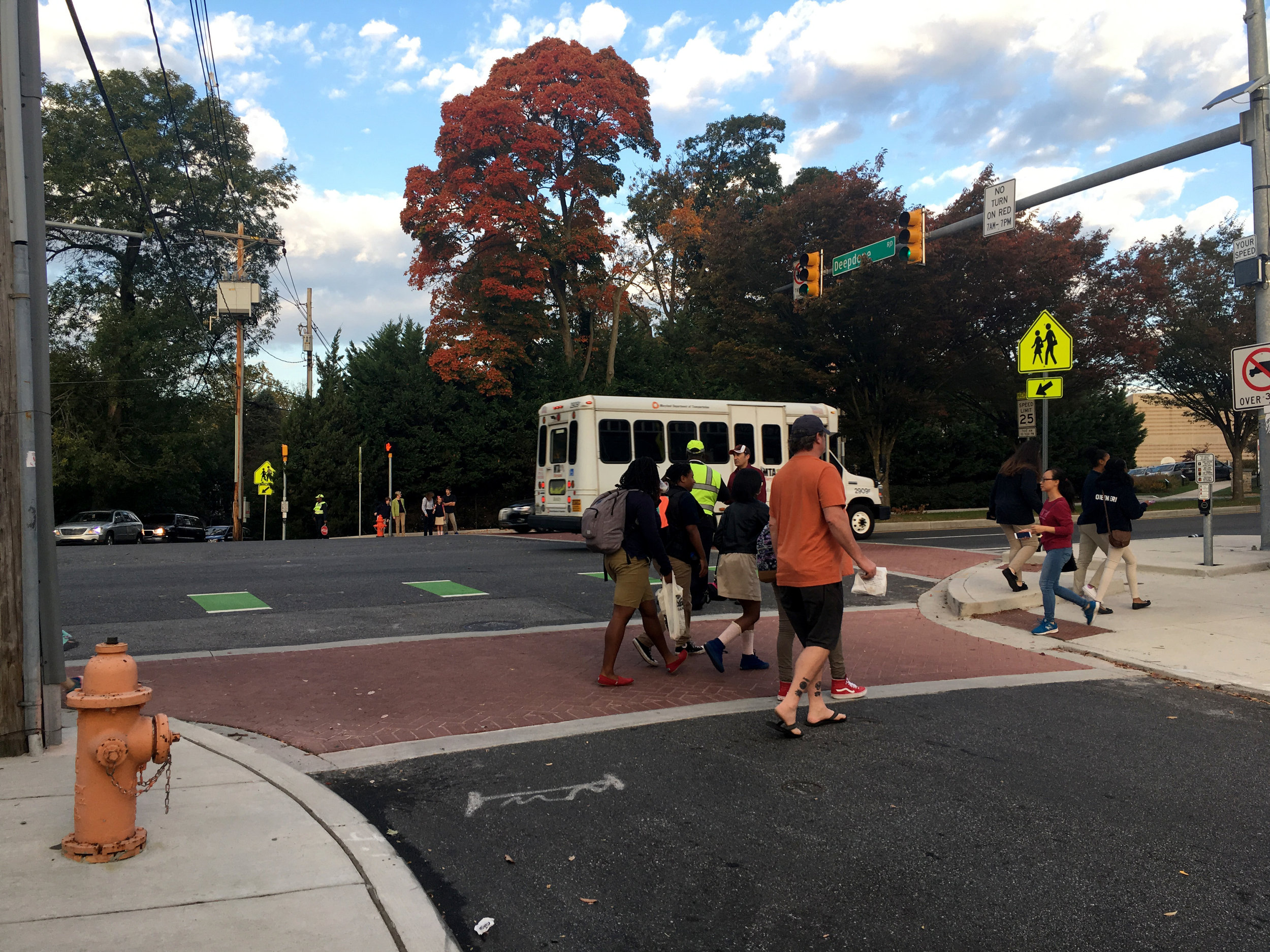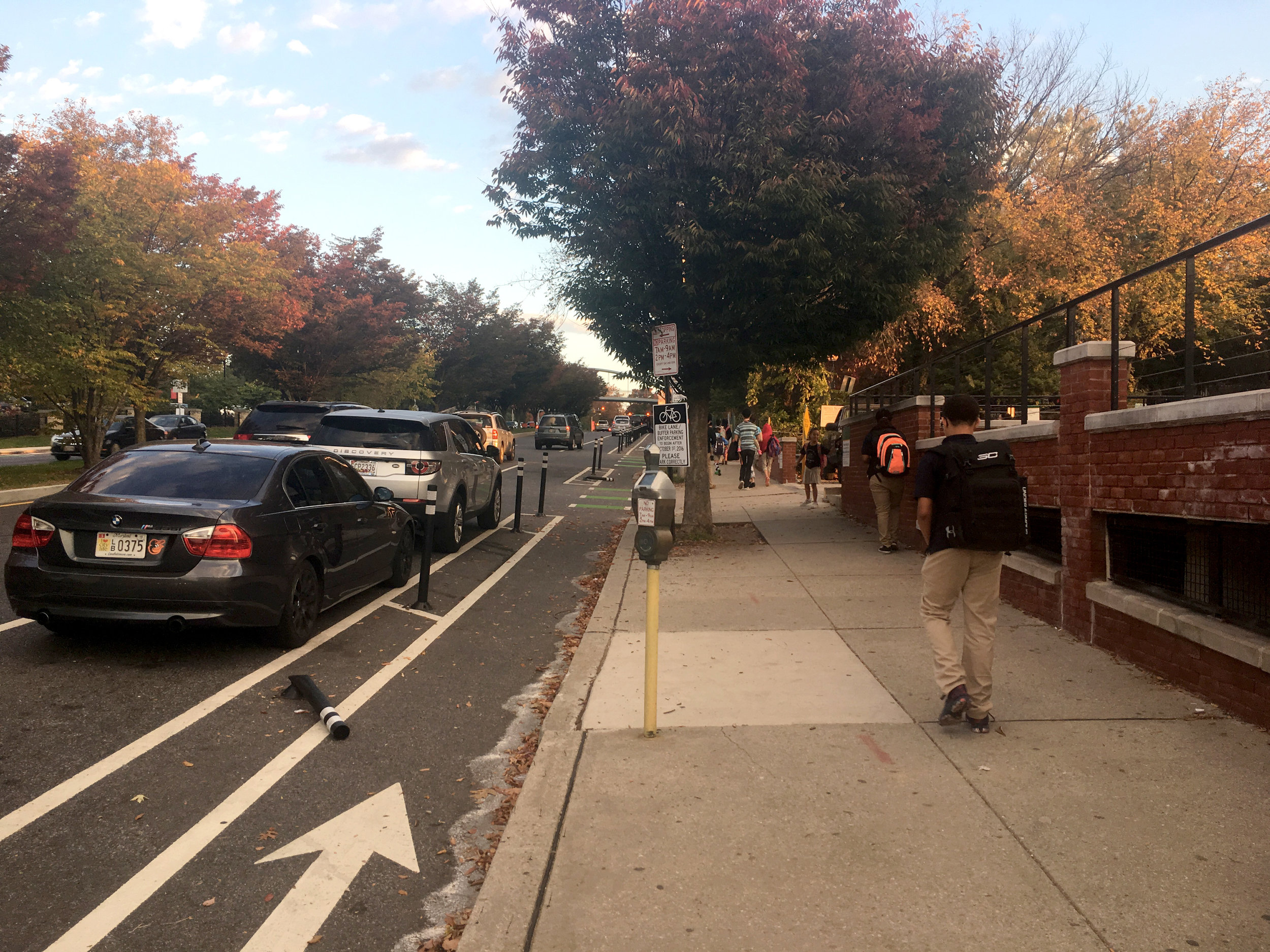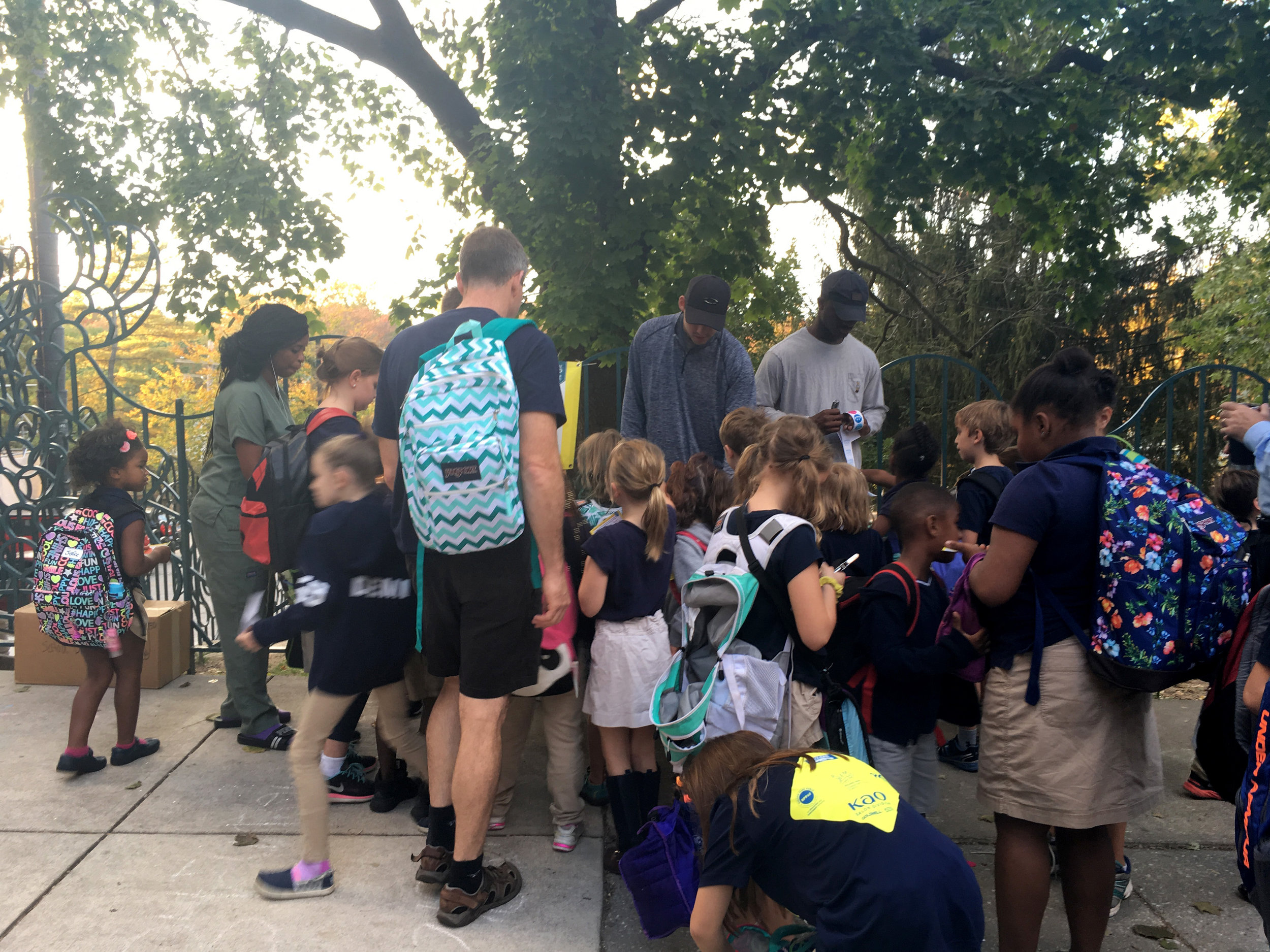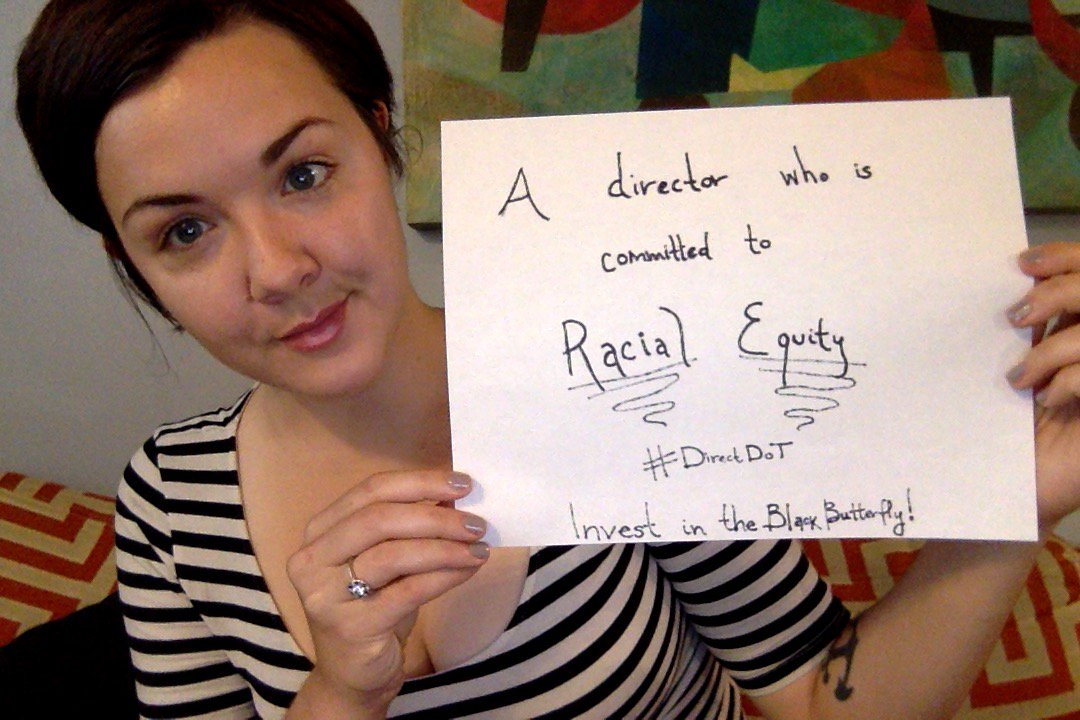This interview is part of #DirectDOT, Bikemore's campaign to send a message to the next administration that the new Director of DOT needs to be a champion for livable streets.
When Anikwenze's sisters taught him how to balance without training wheels, they forgot an important detail — how to stop. At age five, he took off around the block but wiped out when he returned to his own driveway. He still has a scar on his left hand from this early memory of biking, but he kept at it.
In Mississauga, the Toronto suburb he grew up in, there were sidewalks along every street, trails that cut through parks, and bike racks at school — so he walked and biked to school, to visit friends, to play sports, and to the convenience store. Growing up in pre-cell phone days, there there was always a set time to be home by, but the boundaries for how far he could go got further and further as he got older. His parents took him on the subway or train downtown when he went to work with them and he loved the excitement of it. Walking, biking, and public transit were just how he and his family got around.
Today, Anikwenze Ogbue, a transportation engineer here in Baltimore, is figuring out how to get around with his own family in his neighborhood and in his city.
How do you get around?
"The favorite part of my commute is walking my son to child care. After I drop him off I take the bus to work and my wife picks him up. We do all of this as a one-car family. Many people assume that being car-light or car-free is impossible in Baltimore. Three things make it possible to live a car-light or car-free life: safe streets, frequent transit and walkable amenities. We can walk or bike to a frequent bus line on Loch Raven Boulevard (103X & 3). We also have a plaza and a library within walking distance.
The more we did it the more we found ways to make it easier. For instance, taking my son to the pediatrician as a toddler was easier on the bus with a carrier instead of a stroller. I also found that using the bus-bike rack cut my commute time significantly."
What’s your favorite thing about your neighborhood?
"I can’t name just one favorite thing about Original Northwood. I like that everyone is doing something to make the neighborhood better and help each other. We have an active community association that helps to organize different events, like the Summer Block Party, the Newcomers Party, and summer Popsicle nights for families.
We also benefit from having people of different races, backgrounds, ages and incomes. It’s worth noting that it wasn’t always this way. When the Roland Park Company developed Original Northwood covenant restrictions on deeds were used to restrict home sales by race. Although those restrictions no longer exist, a neighbor started the Sister Neighborhood Arts Project (SNAP!) to help our surrounding communities unpack this history and understand how it impacts us today."
What's the biggest barrier in your neighborhood to getting around and accessing amenities by bike or foot?
He says that getting around on bike or by foot is easier within the community, but the neighborhood is bounded by a few major streets: Loch Raven Boulevard, The Alameda and Argonne Drive creating two major intersections with a history of crashes.
Havenwood Road and Loch Raven Boulevard had five crashes during the first quarter of 2016. Because it's highest point on the road, sight distance is limited for three of the roads that lead into the intersection. And at Argonne Drive and The Alameda, five crashed occurred in the first quarter of 2016. As you can see in the photos above, traffic converges from five different directions, it isn’t clear where to turn, and there are no push-buttons or pedestrian signals — so it often feels like a game of chance to guess when it’s your turn to cross. Fortunately, based on some interactions between the neighborhood association and DOT, some lane markings will be added to improve how vehicles move through the intersection.
what would an ideal neighborhood street look like? and WHAT DOES SAFETY even MEAN?
"To me the ideal neighborhood street is safe in two ways. Safety means residents and visitors on the street respect one another. Safety also means the most vulnerable people can use the street regardless of their mode (wheelchair, bike, transit or vehicle). In both ways of viewing safety there are tools to mitigate conflict if it arises."
Anikwenze goes on to say that, "A neighborhood street is also adaptable and responsive to the needs of the community." According to the Census Bureau's 2010-2013 American Community Survey, 30.6% of Baltimore households do not have a car. This is often not due to abundant mobility choices, but an issue of cost and access. This lack of safe and affordable choices caused many communities to innovate and create transportation 'hacks' by themselves, a system of informal drivers picking up residents in the neighborhood and driving them to their destination. And while today formal ride shares like Uber and ZipCar help address this issue, in neighborhoods where multi-modal options have not yet reached many still rely on 'hacks.'
Anikwenze says that, "As a transportation engineer this shows me there is latent demand for improved walking, biking and transit infrastructure in communities with low car ownership. Latent demand can be explained with a story about two shoe salesmen who visit an inaccessible community. After canvassing the area one shoe salesman gave up and reported no sales to his office: 'I’m returning tomorrow. Nobody here wears shoes!' However, the other shoe salesman saw opportunity and informed his office, 'Send more product. Everybody here needs shoes!' If we think like the second salesman Baltimore’s streets will be a safe and adaptable network of sidewalks, bike routes and high-frequency transit."
Why would you like to see leadership at DOT put people before of cars?
"I actually think DOT has made strides to take risks and provide people with more choices to get around without a car," Anikwenze says, citing projects like the bus lanes on Pratt and Lombard for the Baltimore Link, Pratt Street Pilot Pop-Up Cycle Track, Baltimore Bike Share and the Downtown Bike Network. And he notes the collaboration between DOT and MTA on the TIGER grant award for the North Avenue Rising multi-modal improvements. "This same collaborative spirit can lead to concerted efforts with other agencies and communities on specific transportation issues."
Anikwenze says it's crucial to shift the thinking to focus on transportation modes that move the most people in the least amount of space. The traditional level of service (LOS) model judged performance of transportation based on how quickly vehicles move, without factoring in the number of people traveling to a destination — as seen in the visual below.
GIF: Seattle Bike Blog
"To continue making more progress future DOT leadership can seek more opportunities for multi-modal facilities in communities with latent demand. Neighborhoods outside of the waterfront and central city as well as high-capacity transit hubs like Mondawmin Mall are prime locations for improved walking, biking and transit infrastructure. The future of a connected multi-modal transportation network in Baltimore rests on six E’s: Equity, Evaluation, Engineering, Education, Encouragement and Enforcement. These are the tools that ensure every citizen has mobility and access to opportunity.
And if Anikwenze could only say one thing about creating safer streets to the people in charge? He'd tell them transportation is freedom.












